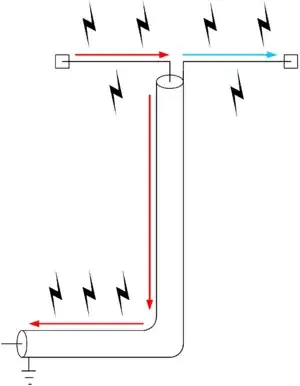Prompted by a previous question found at Using a balun with a resonant dipole -- an answer there included the following text:
"For transmission lines (twin-lead or coax) to not radiate, each conductor must carry equal and opposite currents. It's these equal and opposite currents canceling each other that results in zero net field away from the transmission line. If the currents are not equal and opposite, then they don't cancel, and the difference results in an external electromagnetic field, and your transmission line radiates like an antenna."
A sketch included in that link (repeated below), and the comments about it there are unclear as to how the common-mode r-f current flowing on a braided outer conductor of a perfectly terminated coaxial cable always is confined to the inner surface of that braid.
"Skin effect" keeps most of the r-f current flow very close to the surface of a conductor. But in a braided conductor, what prevents that current from being distributed ~ equally around the circumference of each unit conductor of that braid?
If it was/is, then wouldn't the outer surface of that outer conductor always be "hot" for r-f energy, just as are both conductors of twin-lead transmission line?
It is understandable that r-f current flowing on the inner surface of the outer conductor of rigid coaxial transmission line could not cross to its outer surface until functional paths existed for that purpose, usually at the load end of the line.
Isn't that also true when the outer conductor is braided, if that braid provides paths for r-f current to flow from the ID to the OD of the outer conductor along its entire length?



